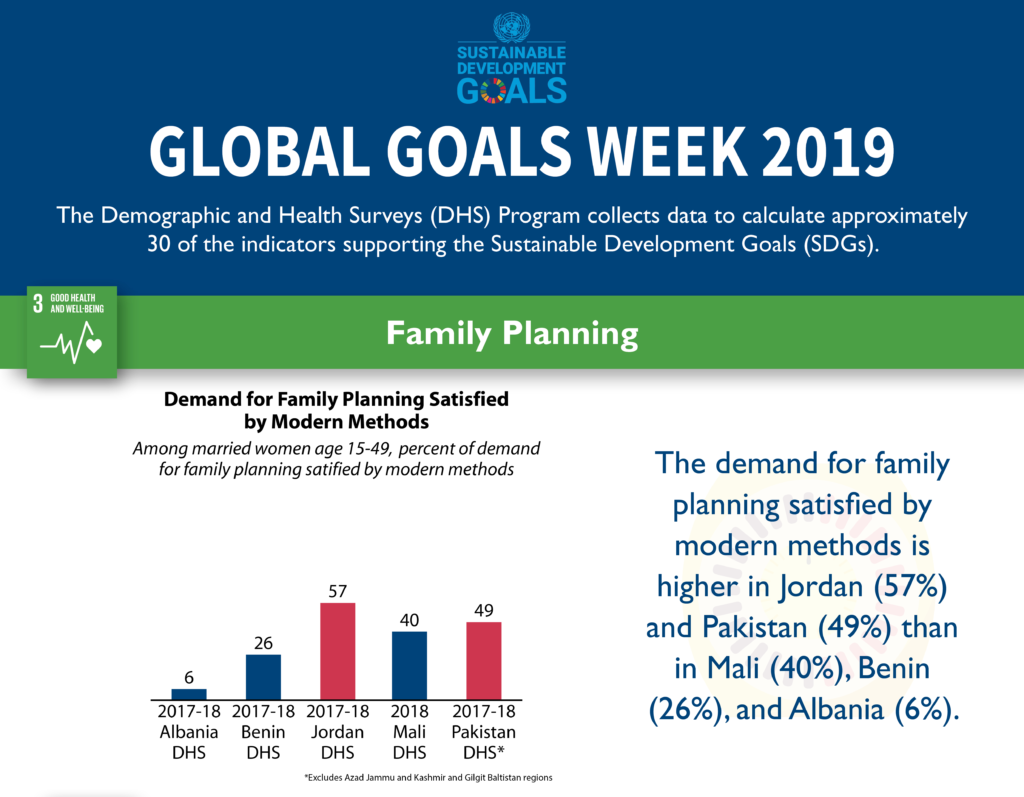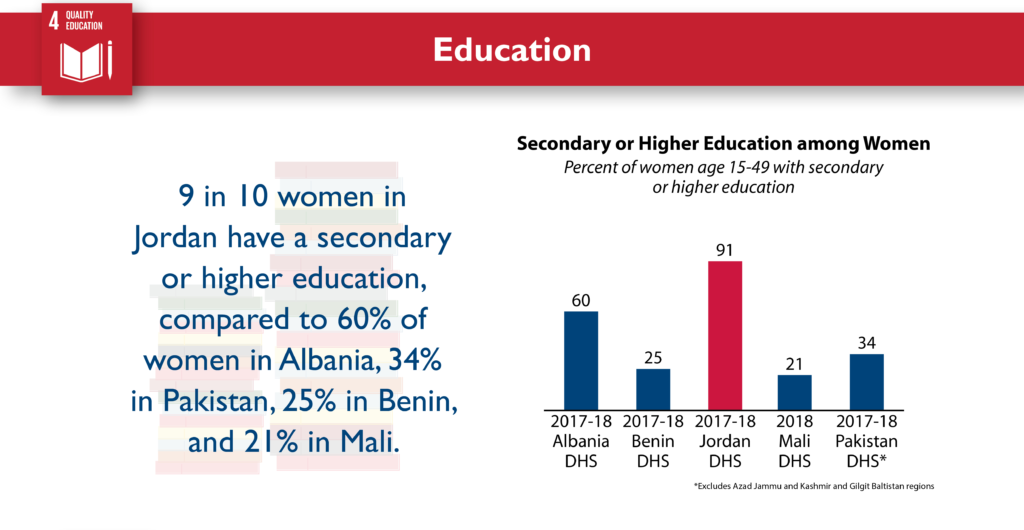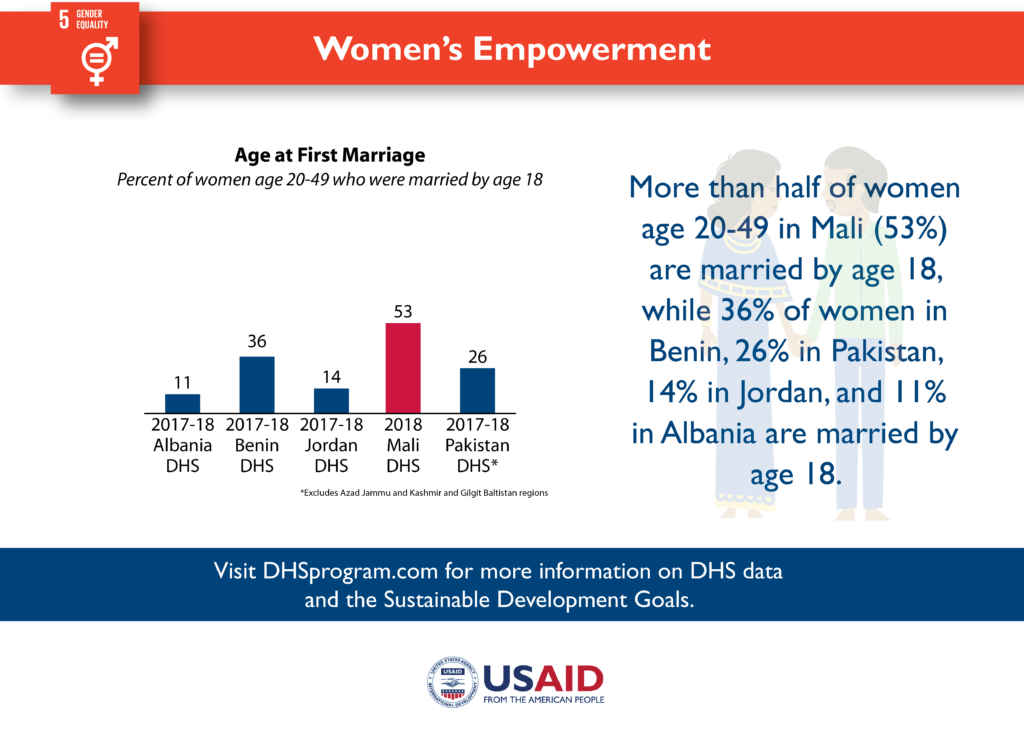Global Goals Week 2019

Global Goals Week is back with a full week of action, awareness, and accountability for the Sustainable Development Goals (SDGs), also known as the Global Goals. The Demographic and Health Surveys (DHS) Program collects demographic and health indicators to calculate approximately 30 of the indicators supporting the SDGs.
These indicators and more can be found in STATcompiler, a tool that allows users to create custom tables, charts, and maps. Use the SDG tag to select from a list of SDG indicators and view them by background characteristics, overtime, and across countries.
This week we are highlighting three Global Goals using DHS data from five recent DHS surveys. Click an SDG indicator in the infographic below and compare the indicators of demand for family planning satisfied by modern methods, secondary education, and age at first marriage in Albania, Benin, Jordan, Mali, and Pakistan. Customize the tables by background characteristics or trends over time to create your own data visualization. Share your results with the #GlobalGoals community.



Share this infographic on Facebook and Twitter, and don’t forget to tag #GlobalGoals to engage with others in this global conversation!

